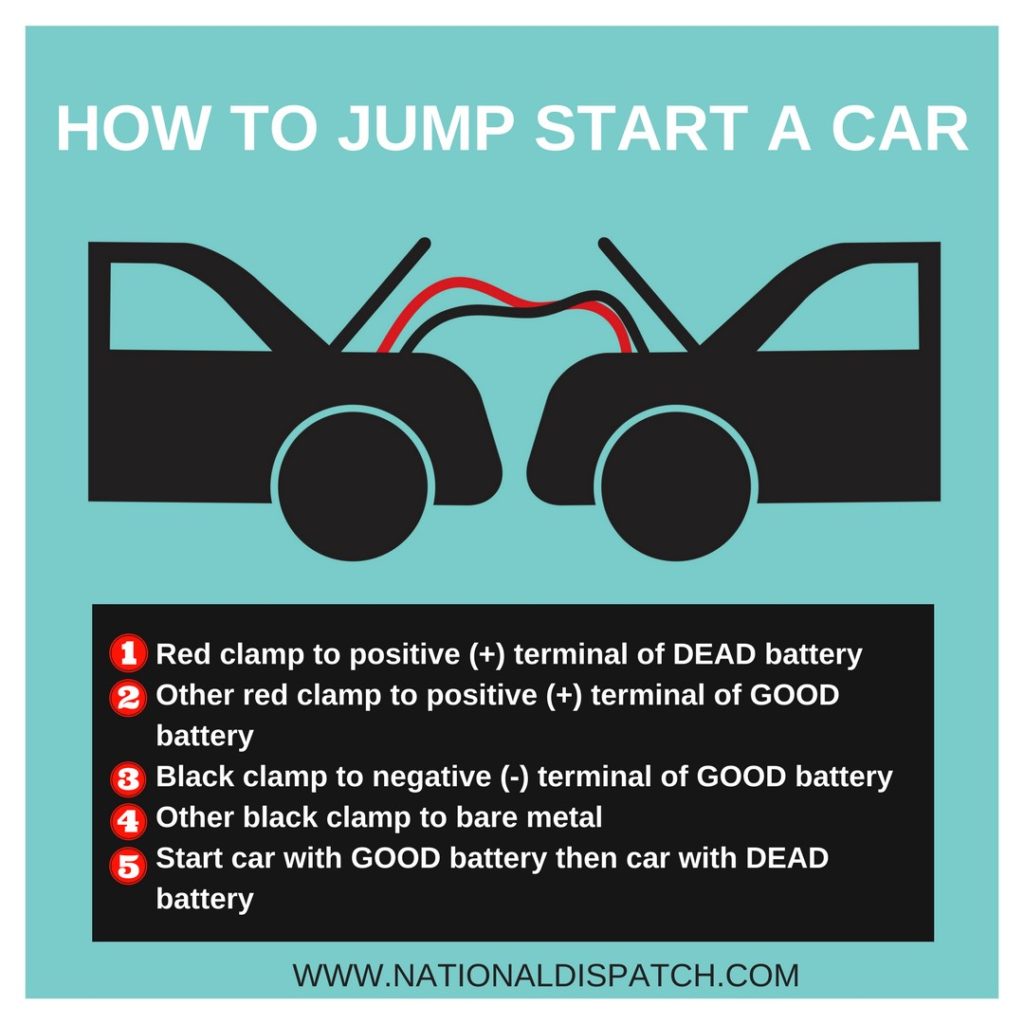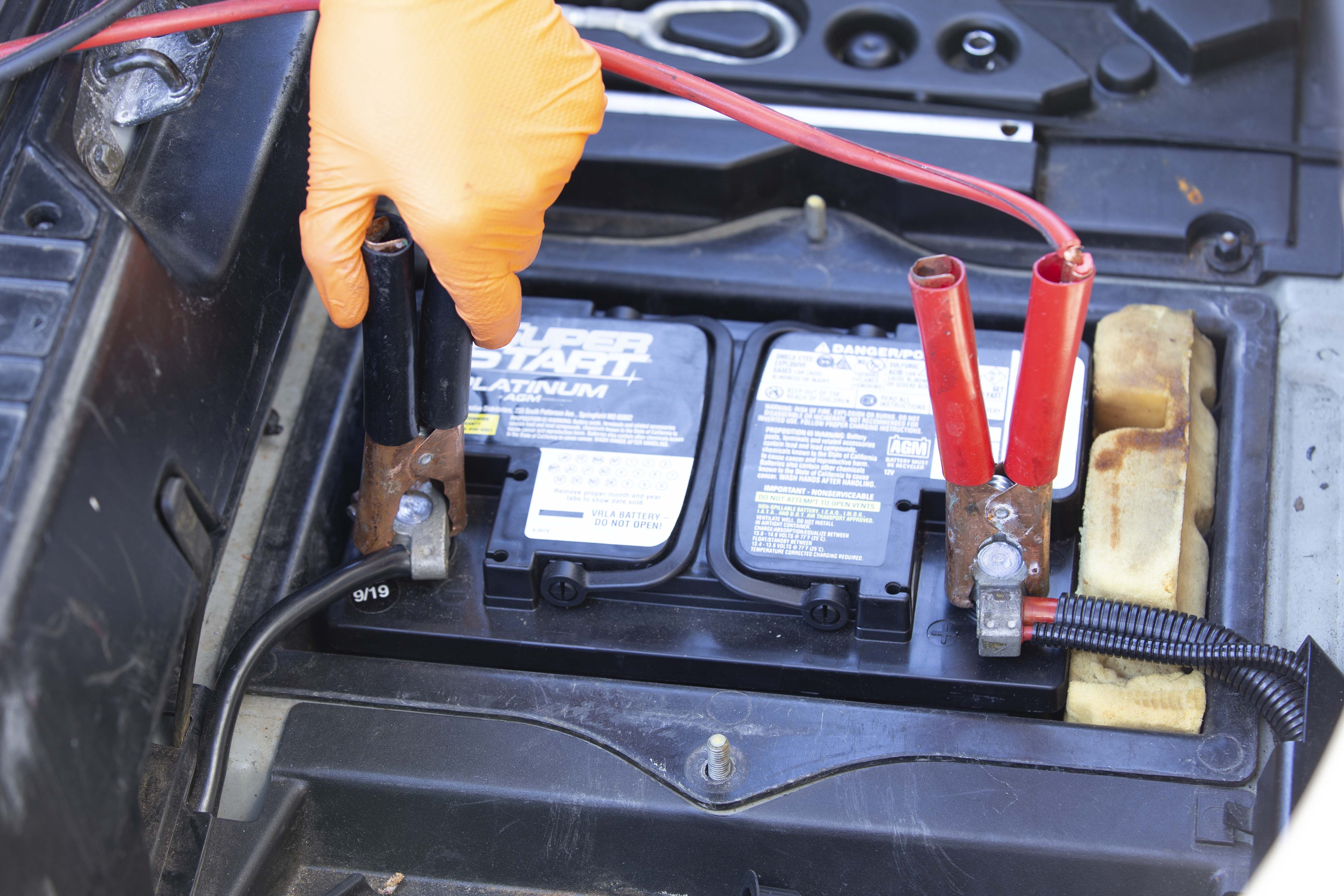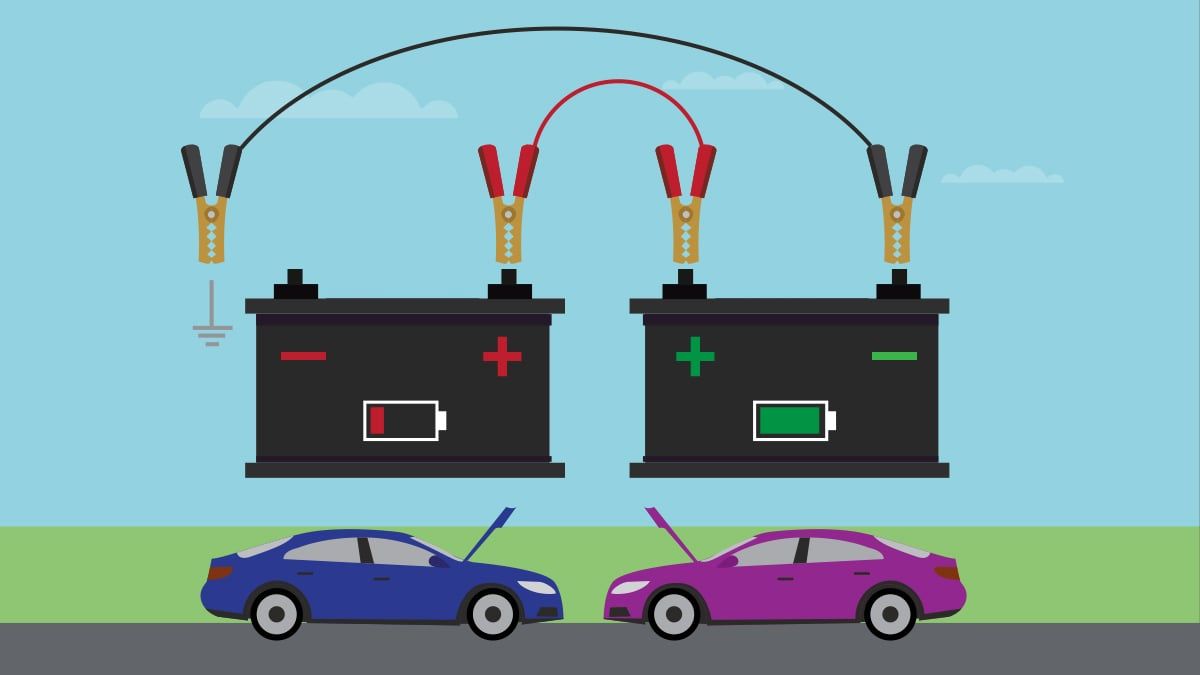Don't Get Stranded: Your Easy Guide To Jump Starting A Car
There's nothing quite like the sinking feeling you get when you turn the key, and your car just won't budge. Maybe you left the headlights on, or the radio playing a little too long, or perhaps your car has just been sitting unused for a while. Whatever the reason, a dead car battery is a common culprit for a no-start situation. But don't fret! Knowing how to jump start a car is a fundamental skill that can save you a lot of hassle and money. In this guide, we'll walk you through the process, incorporating some modern insights that might surprise you.
Car batteries can indeed die, especially if the car hasn't been used for a while, or if accessories like the radio or headlights were left on. Sometimes, even an old battery with seemingly good voltage (like 12.4 volts) might not have enough Cold Cranking Amps (CCA) to start the engine, especially in cold weather. This is where a jump start comes in handy, giving your car the temporary boost it needs to get going.
What You'll Need Before You Start
Before you begin, gather your essentials:
- A "Donor" Car: This is a vehicle with a working battery that can provide the necessary power. Pull the good car next to the dead car so their batteries are close together, but not touching.
- Jumper Cables: These are crucial. Jumper cables typically consist of two thick wires, one red and one black, with clamps on each end. It's worth noting that many cheaper jumper cables are in the 10-12 gauge range and much thinner. Thicker cables (lower gauge number) are generally better as they can pull more power quickly.
- Safety Gear (Recommended): While not strictly mentioned in the data, it's always wise to wear gloves and safety glasses when working with car batteries to protect yourself from potential sparks or battery acid.
Step-by-Step Guide: How to Jump Start Your Car
Follow these steps carefully to ensure a safe and successful jump start:
1. Preparation
- Position the Cars: Park the donor car next to the dead car, ensuring the batteries are close enough for the jumper cables to reach comfortably without stretching. Make sure both cars are turned off, and their parking brakes are engaged.
- Locate the Batteries: Pop open the hoods of both vehicles and locate their respective batteries. Identify the positive (+) terminal (usually larger and marked with a plus sign, often covered by a red cap) and the negative (-) terminal (usually smaller and marked with a minus sign, often covered by a black cap).
- Modern Car Batteries with Built-in Backup: Some modern cars, if they have a built-in backup system (like some Teslas or other vehicles with specific features), might have a "big red button" on top of the battery. If your car has this, you might just need to push it to activate the built-in backup and allow your car to start. It automatically resets once charge is applied, so you don't need to push it again. This is a convenient alternative if available.
2. Connecting the Cables (The Crucial Steps)
This is where precision is key. Follow the sequence below:
- Red to Dead Positive: Attach one red (positive) clamp to the positive (+) terminal of the dead car's battery.
- Red to Donor Positive: Attach the other red (positive) clamp to the positive (+) terminal of the donor car's battery.
- Black to Donor Negative: Attach one black (negative) clamp to the negative (-) terminal of the donor car's battery.
- Black to Dead Car Ground: Attach the remaining black (negative) clamp to an unpainted, exposed metal surface in the engine bay of the dead car. This could be a metal bracket or a bolt, away from any moving parts or fuel lines. This creates a quasi-parallel circuit between the two batteries, allowing the good battery to give the other car enough juice.
3. The Waiting Game & Starting the Dead Car
This step often differs from traditional advice, especially with modern vehicles and thinner cables:
- No Need to Start the Donor Car (Often): Contrary to popular belief, you often don't need to start the donor car's engine. In fact, according to some experiences, trying to jump start while the good car's engine is running can sometimes hinder the process. "The last couple times I couldn't jump start while the good car's engine was running. The moment it got turned off the other car was able to start. I don't know, or care, why, but I never start the 'donor' car anymore."
- Wait for a Minute (or More): Once the cables are connected, wait. "These days you just connect red->, black-> ground point, wait a minute, then start the dead car. No starting the good car." This waiting period allows the dead battery to pull power from the donor battery and build up enough charge. If you have thinner, cheaper jumper cables (in the 10-12 gauge range), they might not be thick enough to pull enough power to start the dead car instantly using only the donor's battery. In such cases, you absolutely have to wait for the dead battery to pull power and charge itself.
- Attempt to Start: After waiting for at least a minute, try to start the dead car. If it doesn't start immediately, wait a bit longer – perhaps 5-10 minutes – to allow more charge to transfer. If the car you are jumping has a "dead, dead battery," it will take even longer.
4. Disconnecting the Cables
Once the dead car starts, keep it running and disconnect the cables in the reverse order of connection:
- Remove the black (negative) clamp from the ground point on the now-running car.
- Remove the black (negative) clamp from the donor car's negative (-) terminal.
- Remove the red (positive) clamp from the donor car's positive (+) terminal.
- Remove the red (positive) clamp from the now-running car's positive (+) terminal.
Keep the jumped car running for at least 15-30 minutes, or take it for a drive, to allow its alternator to recharge the battery sufficiently. The car's charging system should be able to handle the recharging of the battery after the start, and then the operation of the vehicle (ignition, AC, etc.).
Common Questions & Advanced Tips
Do I Need to Start the Donor Car's Engine?
As highlighted earlier, often no. Many modern vehicles and even older ones can effectively transfer charge without the donor car's engine running. The idea is to let the dead battery slowly draw charge from the donor battery. If your cables are thin, this waiting period is even more critical. The donor car's alternator is typically used to jump the other car along with its battery, but sometimes the donor car's engine being off is more effective.
What if My Battery is "Dead, Dead"?
If your battery is extremely depleted, it will take longer to charge. In such cases, the waiting period might extend to several minutes. Some portable jump starters with supercapacitors (like a River or Delta unit) can quickly charge a flat battery. "In most cases that's just enough for a jump start. If the start fails, it takes around 1 minute to get the caps back to 14V with 100W a DC outlet of a River or Delta can provide. You can take that down to seconds using AC outlet and a powerful enough charger." My current DIY project is even replacing a car battery with a River 2 Pro and a supercap box!
Can I Jump Start with Any Car? (e.g., Prius, Lawnmower)
- Prius (and other hybrids): You can, but it's generally not recommended for anything but an emergency situation. Prius vehicles have many delicate electronic systems. If you do jump start a car with your Prius, it's advised to only use the Prius to charge the dead battery for several minutes, then remove the jumper cables and allow the other car to start on its own battery. Do not attempt to crank the dead car while connected to the Prius.
- Lawnmower: While one anecdote mentions jumping a car with a lawnmower, it's highly impractical and not recommended for typical cars. "Well, I was referring to the time I jumped my car with a lawnmower, however should you want to jump a car with a lawnmower, it really depends on the car in question and how fast your lawnmower is. Personally I'd recommend starting with an 80's civic, a used Murray, and about 100 ft (30.48 m) ramp with a fairly aggressive curve." This is clearly a humorous and extreme scenario, not a practical solution!
Why Did My Battery Die in the First Place?
Car batteries can die for various reasons:
- Parasitic Drain: Leaving headlights, interior lights, or the radio on can drain the battery.
- Lack of Use: If a car hasn't been used for a while, the battery can slowly discharge.
- Cold Weather: Extreme cold reduces a battery's capacity and its ability to deliver current (CCA). An old battery with low CCA won't start the car, especially as winter temperatures set in, even if it reads 12.4 volts.
- Failing Alternator: If your car starts but then dies shortly after disconnecting the cables, or if it acts "weird" and slows down before dying, your alternator might not be charging the battery properly.
- Old Battery: Batteries have a finite lifespan, typically 3-5 years.
Final Thoughts
Knowing how to jump start a car is an invaluable skill that can get you out of a sticky situation. Remember the key takeaways: safety first, connect red to positive and black to a ground point on the dead car, and importantly, don't always feel the need to start the donor car's engine – often, a few minutes of waiting is all it takes for the dead battery to draw enough charge. If your car battery frequently dies, or if jump-starting doesn't work, it might be time to test your battery or charging system, or consider a replacement. Stay safe on the road!

How To Jump Start A Car - National Dispatch

How To Jump Start A Car Battery Without Another Car Outlet | dntu.edu.vn

Jumpstarting your car